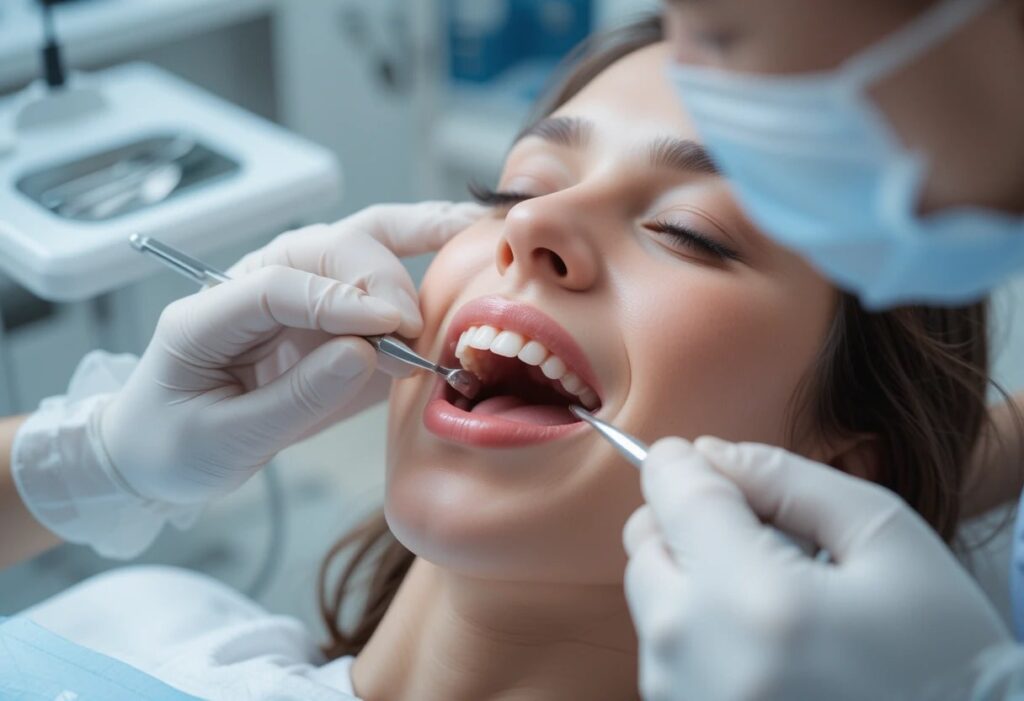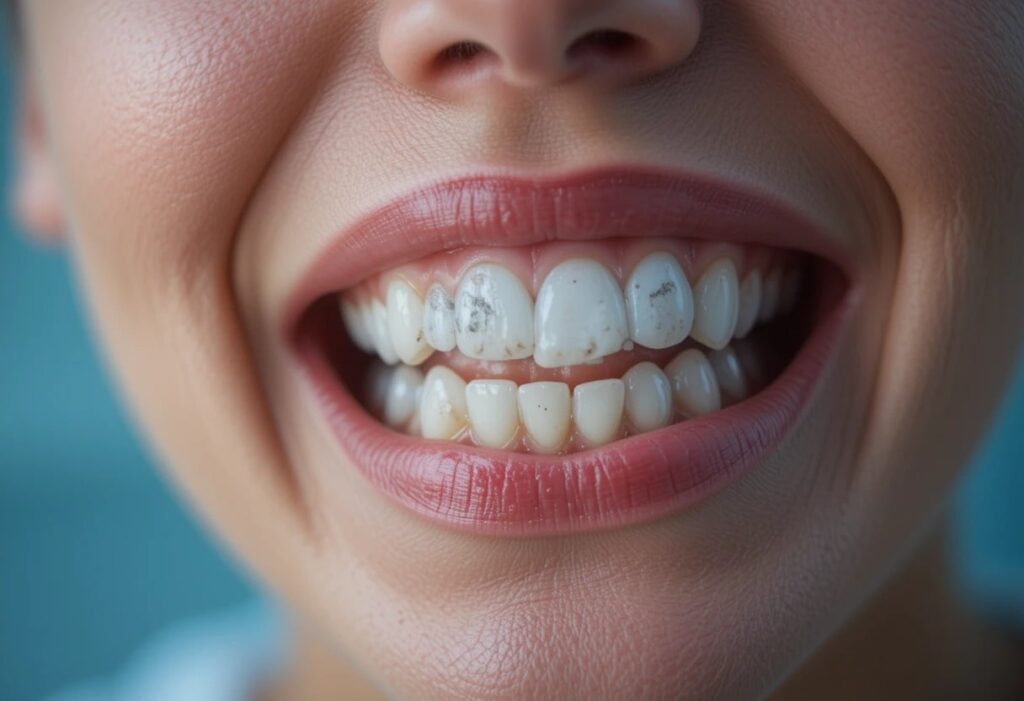When Is It Too Late To Reverse Gum Disease – Expert Advice You Need Now!
Gum disease affects millions of people across the globe, especially adults over the age of 30. It begins with mild symptoms like redness or swelling, but can silently progress into a severe condition that threatens both your oral and overall health. The problem lies in how easy it is to overlook early signs.
Many individuals don’t take action until the disease has already advanced, resulting in painful complications and long-term consequences. Knowing exactly how and when gum disease can be reversed—and when it cannot—is essential for anyone hoping to protect their smile and avoid tooth loss.
This article provides a full explanation of how gum disease develops, when it’s too late to reverse it, and what options remain for treatment. You’ll also discover two helpful tables summarizing key stages and treatments in a simple format.
What Is Gum Disease and How Does It Start?
Gum disease, medically referred to as periodontal disease, is a bacterial infection that affects the gums and the structures supporting your teeth. It usually begins with plaque—a sticky film made of bacteria—that builds up on the teeth due to poor oral hygiene.

Over time, this plaque hardens into tartar and spreads beneath the gum line, triggering inflammation and infection. This disease progresses in stages, from a mild condition to a chronic, irreversible one.
What Are the 3 Stages of Gum Disease and Can They Be Reversed?
Gum disease progresses gradually, and each stage presents different risks. The earlier it’s identified, the better the chance of full recovery. Here’s a breakdown:
Stages of Gum Disease and Reversibility:
| Stage | Common Symptoms | Reversibility | Action Required |
| Gingivitis | Red, swollen, bleeding gums | Fully reversible | Improved hygiene, dental cleanings |
| Periodontitis | Gum recession, bad breath, loose teeth | Not reversible, manageable | Deep cleaning, scaling, and regular follow-up |
| Advanced Periodontitis | Bone loss, severe infection, and tooth loss | Irreversible | Surgery, bone grafting, and ongoing management |
When Is It Too Late to Reverse Gum Disease?
Gum disease becomes too late to reverse once it progresses beyond gingivitis into periodontitis. At this advanced stage, the infection causes irreversible damage to the bone and connective tissues that support your teeth. Unfortunately, this kind of structural harm cannot be undone naturally.
Still, it’s important to recognize when the disease has reached this critical point. Here are the key signs that gum disease is no longer reversible:
- Bone loss around the teeth: Detected through dental X-rays and often accompanied by gum shrinkage
- Teeth are mobile or feel loose: A sign that the supporting structures have weakened
- Gums have significantly receded: Exposing more of the tooth surface and making the smile look “longer”
- Tooth roots are exposed and painful: Increasing sensitivity to temperature and touch
- Pockets between gums and teeth are deep (more than 4mm): These harbor bacteria and are hard to clean without professional help
Although you can’t reverse the disease once it reaches this point, it is still possible to treat and control it effectively. With timely intervention—such as deep cleanings, surgical options, and improved oral hygiene—you can slow the disease’s progression, manage symptoms, and preserve your remaining teeth for years to come.
What Are the Symptoms That Suggest Advanced Gum Disease?
When gum disease reaches a more serious stage, several clear warning signs begin to appear. These symptoms often indicate that the condition has progressed beyond gingivitis and is now affecting deeper gum and bone tissues. Here’s what to look out for:
- Persistent bad breath: If you notice that your breath smells unpleasant even after brushing or using mouthwash, it may be due to bacteria trapped deep within the gums. This kind of odor often signals an ongoing infection caused by advanced gum disease that needs professional treatment.
- Pain when chewing: Feeling pain or discomfort while biting or chewing could mean that your teeth are no longer securely supported by healthy bone and tissue. This symptom suggests gum and bone damage, which commonly occurs in the later stages of periodontal disease.
- Shifting or misaligned teeth: If your teeth begin to move or feel out of alignment, it’s usually because the bone structure that keeps them stable has weakened. This shifting can change your bite, create spaces, and is a major sign that gum disease has advanced significantly.
- Bleeding during brushing or flossing: While occasional gum bleeding may happen from brushing too hard, consistent bleeding—especially with gentle brushing or flossing—is a warning sign of inflammation. It indicates the gums are infected and no longer healthy, often pointing to a more serious stage of the disease.
- Pus formation near the gum line: Pus or white fluid oozing around the gums is a strong indicator of a deep infection. This is your body’s response to bacterial invasion, and it often means the disease is progressing below the surface and requires immediate dental intervention to stop further damage.
- Red, tender, or swollen gums: Healthy gums should be firm and pink. If yours are red, puffy, or painful to touch, it usually signals an ongoing infection. Swelling occurs as your body tries to fight bacteria, and prolonged inflammation can quickly lead to further tissue and bone loss.
What Are the Effective Treatments Even When It’s Too Late to Reverse Gum Disease?

Even if gum disease has advanced beyond the point of reversal, there are still highly effective treatments available to control the infection, preserve your teeth, and maintain long-term oral health. Below are some commonly recommended treatments your dentist or periodontist may suggest:
Scaling and Root Planing (Deep Cleaning):
This non-surgical deep cleaning removes plaque and tartar from beneath the gum line, where brushing and flossing can’t reach. It also smooths the root surfaces of teeth, making it more difficult for bacteria to reattach. This process encourages the gums to reattach to the teeth and helps reduce inflammation and pocket depth.
Medications:
Antibiotics or antimicrobial mouth rinses may be used alongside deep cleaning procedures to fight bacteria and reduce infection. These medications come in the form of oral pills, topical gels, or mouthwashes. They are especially helpful in managing difficult-to-reach areas and preventing further gum damage during the healing process after other periodontal treatments.
Periodontal Maintenance:
Patients with chronic gum disease require more frequent dental cleanings—typically every three to four months. These cleanings are more in-depth than regular ones and target plaque buildup in deep pockets. Periodontal maintenance is crucial for preventing flare-ups, monitoring gum health, and keeping the disease from progressing any further once it has stabilized.
Surgical Treatments:
In severe cases where non-surgical treatments aren’t enough, surgical procedures may be needed. Flap surgery allows the dentist to lift the gums for deep cleaning, while bone or gum grafts can restore lost tissue. These surgeries won’t reverse the damage but can significantly slow down disease progression and improve long-term outcomes.
What Are the Common Treatment Options for Gum Disease?
| Treatment Type | Purpose | Ideal Stage | Duration of Recovery |
| Scaling & Root Planing | Clean below gums, reduce inflammation | Gingivitis to early periodontitis | 1–2 weeks |
| Antibiotics | Fight bacteria and infection | All stages | Immediate results; ongoing use may be needed |
| Flap Surgery | Access deep pockets for cleaning | Advanced periodontitis | 2–4 weeks |
| Bone/Gum Grafting | Restore lost tissue | Advanced periodontitis | Several months for healing |
Can Gum Tissue or Bone Grow Back Naturally?
Unfortunately, once gum tissue or bone has been destroyed by periodontitis, it won’t grow back on its own. However, regenerative treatments may help recover some of the lost support. These include:
- Bone grafts
- Soft tissue grafts
- Guided tissue regeneration
- Platelet-rich plasma (PRP) therapy
These procedures aim to stimulate the body’s healing process and restore partial function, but they do not fully reverse the disease.
What Lifestyle Changes Can Support Periodontal Health?
Even if gum disease has progressed beyond the point of reversal, the right lifestyle choices can still make a huge impact. Consistently practicing these habits can help slow the disease, reduce symptoms, and support better long-term gum health. Here are the most effective daily changes to adopt:
- Brush twice a day using fluoride toothpaste: Brushing morning and night with fluoride toothpaste helps remove plaque, reduce bacterial buildup, and protect exposed tooth roots. It’s essential for maintaining gum health and preventing further damage, especially in areas where gum recession has already begun.
- Floss daily to remove plaque from between teeth: Flossing removes food particles and plaque that your toothbrush can’t reach, especially between the teeth and below the gum line. Consistent flossing helps prevent tartar formation and reduces inflammation in areas most vulnerable to gum disease.
- Use antimicrobial mouthwash for extra protection: Rinsing with an antimicrobial mouthwash can kill bacteria in places brushing and flossing may miss. It also helps freshen breath and reduce plaque buildup, which supports healing and reduces the risk of further gum infection.
- Avoid smoking, which slows healing and worsens infection: Tobacco use impairs blood flow to the gums, slows down healing, and increases the risk of severe infection. Quitting smoking can dramatically improve treatment outcomes and reduce the rate of gum disease progression.
- Maintain a healthy diet, especially rich in Vitamin C and calcium: A balanced diet supports your immune system and gum tissue repair. Foods rich in Vitamin C help fight inflammation, while calcium strengthens the bone supporting your teeth, both of which are critical for managing periodontal disease.
- Visit your dentist regularly, at least every 3–4 months: Frequent dental visits allow your dentist to monitor gum health, remove hidden plaque, and adjust your treatment plan as needed. Periodontal patients often need more frequent cleanings than the standard twice-a-year schedule to keep disease under control.
How to Know If You Need a Periodontist?
While general dentists are equipped to manage mild to moderate gum issues, some symptoms require more specialized care. If you’re dealing with repeated gum infections, loose or missing teeth, deep gum pockets, or discomfort in your jawbone, it’s a strong sign the condition has progressed.
These symptoms often indicate advanced periodontal disease that demands targeted treatment. In such cases, consulting a board-certified periodontist is essential. They have the expertise to manage complex gum conditions and can help preserve your oral health through early, customized interventions.
What Are the Risks of Ignoring Gum Disease?
Ignoring gum disease or postponing treatment can lead to serious, long-term consequences. As the condition worsens, you may experience permanent tooth loss, chronic pain, and heightened sensitivity. The infection can destroy supporting bone, resulting in jawbone deterioration and visible gum recession, which impacts both function and appearance.

Beyond oral health, advanced gum disease is linked to serious health problems, including heart disease, stroke, and diabetes. It can also cause difficulty eating or speaking, affecting your overall quality of life. Understanding these risks highlights why early diagnosis and treatment are critical.
FAQs:
1. Can untreated gum disease spread to other parts of the body?
Yes, untreated gum disease can allow harmful bacteria to enter the bloodstream, potentially affecting other parts of the body. Research links advanced gum infections with systemic conditions like heart disease, respiratory infections, and complications in diabetes, making prompt treatment important for your overall health—not just your smile.
2. Is it possible to treat gum disease without surgery?
In many cases, especially in early to moderate stages, gum disease can be treated without surgery through deep cleaning procedures like scaling and root planing, along with antibiotics. However, if the disease is advanced and tissue loss is significant, surgical options may become necessary to stabilize the condition.
3. How do I know if my gum treatment is working?
You’ll notice reduced bleeding, fresher breath, less gum swelling, and improved comfort while brushing or eating. Your dentist will also measure the depth of gum pockets over time. If they begin to shrink and stabilize, it’s a strong sign your treatment is effectively managing the disease.
4. Are receding gums always caused by gum disease?
No, gum recession isn’t always a result of gum disease. It can also be caused by aggressive brushing, genetic factors, or misaligned teeth. However, if recession is paired with bleeding, sensitivity, or loose teeth, gum disease may be involved and should be evaluated by a dental professional.
5. Can I reverse the damage from advanced gum disease with natural remedies?
While natural remedies like saltwater rinses or oil pulling may reduce surface bacteria and inflammation, they cannot reverse the bone or tissue loss caused by advanced gum disease. These methods can support daily hygiene but should never replace professional periodontal care.
Conclusion:
Gum disease is a progressive condition that must be addressed early to be reversible. Once it reaches periodontitis, reversal is no longer possible—but treatment and management are still effective. Early awareness, lifestyle changes, and professional care are the keys to preserving long-term oral health.
Neglecting the symptoms can lead to irreversible damage, including tooth loss and jawbone deterioration. However, consistent oral hygiene and regular periodontal checkups can significantly slow the disease. Taking action today can protect not only your smile but your overall health for years to come.
Related post:






